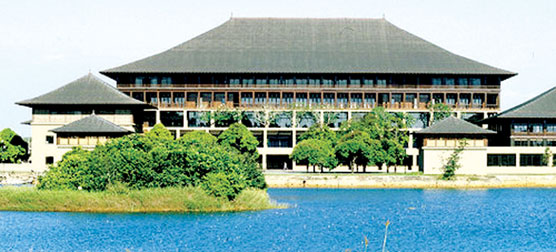2012 Budget focuses on infrastructure growth - Verité Research
In 2010, overall consumption as a percentage of GDP decreased from
82.1 percent in 2009 to 81.3 percent in 2010. The Government consumption
as a percentage of GDP had decreased from 17.6 percent to 15.6 percent.
This was a departure from the trend followed in the past years, where
Government consumption had generally increased , a report by Verité
Research on the 2012 Budget stated.
 Private investment as a percentage of GDP had recorded a decrease
from 24.4 percent in 2009 to 21.6 percent in 2010. This too was a
departure from the usual trend, as in the past years, private investment
had fallen. Private investment as a percentage of GDP had recorded a decrease
from 24.4 percent in 2009 to 21.6 percent in 2010. This too was a
departure from the usual trend, as in the past years, private investment
had fallen.
Foreign Direct Investment (FDI) had decreased by around 14 percent
from $601 m in 2009, to $ 516 m in 2010.
In terms of Exports of Goods and Services as a percentage of GDP,
there had been no major change. In 2009, the ex-ports of goods and
services as a percentage of GDP had been 16.8 percent, while in 2010, it
was 16.7 percent, as a percentage of GDP. The Earnings from exports had
however, increased by 17.3 percent to $ 8,307 m in 2010 from $ 7,085 m
in 2009. The Central Bank Annual Report credited this improvement to
certain factors such as a better investment climate, attractive prices
and gradual recovery in external demand.
Imports as a percentage of GDP from 24.3 percent in 2009 to 27.2
percent in 2010. This increase in imports was not in accordance with the
usual trend followed in the past, where imports had been on the decline.
The report stated that in 2010, the Government debt is said to have
fallen from 86.2 percent of the GDP to 81.9 percent. Projected figure in
2011 is 78.2 percent of GDP and 74.2 percent in 2012. However, the
composition of Government debt does not provide for pension payments in
the Central Bank Report which was previously inaccurately titled as
welfare payments. Pension payments have in fact grown this year due to
the provision to public servants with a special allowance of 5 percent
of their basic salary.
In the first nine months (Jan- Sept) of 2011, government expenditure
on pension payments amounted to 74 b, compared to the 65 b in the first
nine months of 2010. This was an increase of 13.8 percent. Thus
government debt may actually be higher than that which is reported.
The Budget demonstrated a clear intention to focus on rapid
infrastructure development in certain key sectors, especially in
relation to transportation.
The Ports and Highways Ministry that comes directly President Mahinda
Rajapaksa will see further increases in capital expenditure accounting
for more than 25 percent of total capital expenditure in 2012. On the
other hand, combined capital expenditure on health, education and higher
education will be approximately 6 percent of total capital spending.
Lower capital expenditure in health and education, in comparison to
costly infrastructure projects is not an anomaly, but the increased and
sustained widening of the gap between the two shows a conscious move
away from Sri Lanka’s emphasis on welfare spending to the development of
hard infrastructure.
Capital spending on higher education was notable as being the only
one of the four which saw an estimated 12 percent reduction in capital
expenditure from the previous year, while the three other categories saw
an increases in expenditure.
The shift, as demonstrated by trends in capital expenditure
allocations from 2008-2012, should result in rapid short-term and growth
may help facilitate the growth of new industry, but could also
compromise long-term social development if spending on health and
education does not keep pace.
As a result of this shift, the government has increasingly shifted
the burden of welfare spending, most notably health spending to private
individuals. By 2010, total private spending on health had overtaken
total government spending on health (combined recurrent and capital
expenditure).
However, education spending by the government still remains much
higher than private spending.
This trend is also affirmed when considering spending (both recurrent
and capital spending) as a percentage of GDP. In 2010, the total health
expenditure by the Government was Rs. 73,835 million.
This is equivalent to 1.32 percent of the GDP for that year. In 2005,
the Total Health Expenditure as a percent of GDP was 1.83 percent.
However, in 2010, expenditure had fallen to 1.32 percent. From 2005
to 2010, the country has recorded a 27.8 percent decrease in the total
expenditure on health as a percent of GDP.
The total expenditure on education for 2010, was 104.2 billion, (this
includes the government expenditure on higher education) which amounts
to 1.86% of the GDP.
In 2005, the total expenditure on education as a percent of GDP
amounted to 2.59 percent, whereas it had fallen in 2010 to 1.86 percent.
This records a 28 percent decrease in the expenditure on education as a
percent of GDP, from 2005 to 2010.
Sri Lanka’s falling health and education spending means that its
current shortfalls in the provision of these welfare goods in comparison
to more developed states will widen in the future.
|

